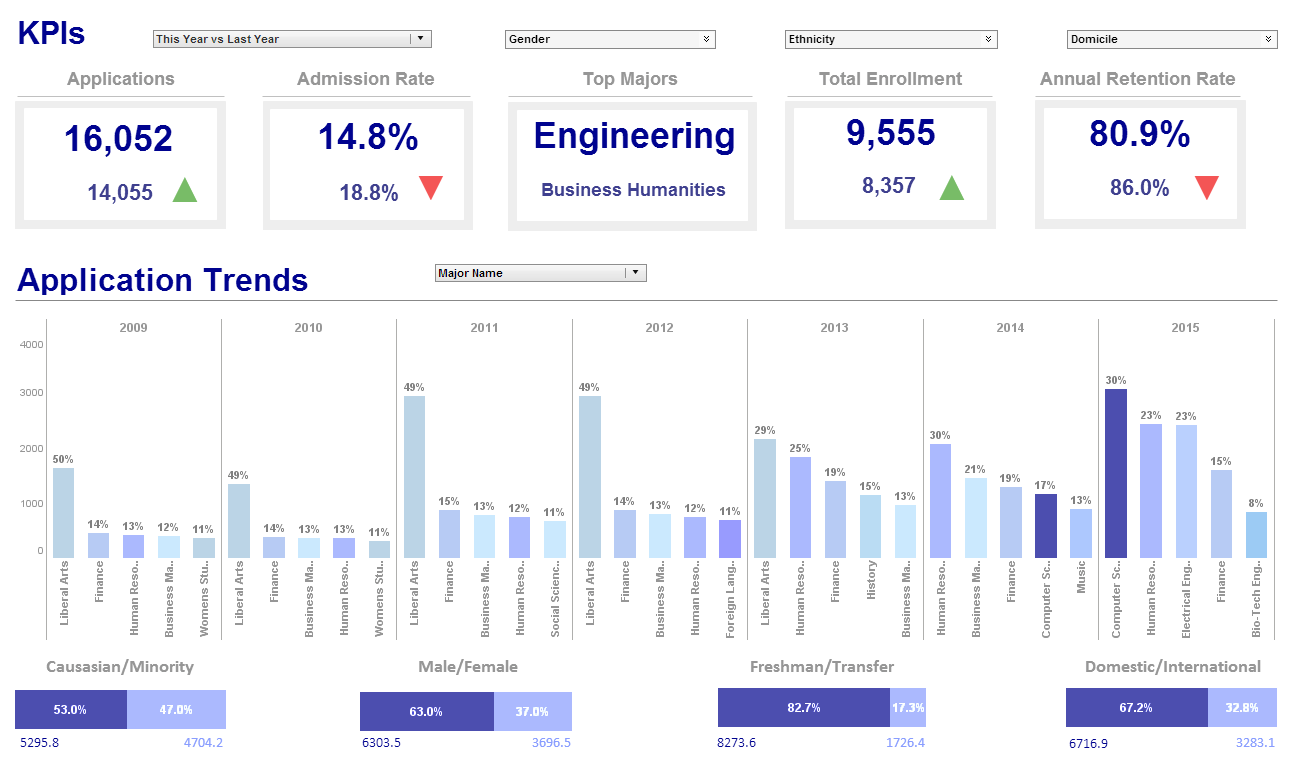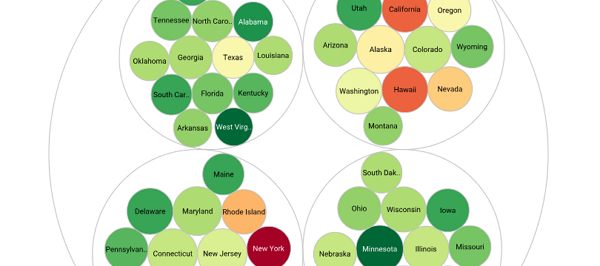InetSoft Webinar: Guidelines For Organizing BI Programs
This is the continuation of the transcript of a Webinar hosted by InetSoft on the topic of "Top Success Factors of Business Intelligence." The speaker is Mark Flaherty, CMO at InetSoft.
What are some guidelines for organizing BI programs or projects for success? How should organizations structure the teams working on BI applications? The most important thing is because the partnership between business and IT is so important, anything that can be done organizationally to almost force that partnership is good.
So if you are deploying business intelligence on an enterprise level approach, then staffing the BI Competency Center jointly by technical professionals as well as business users and business subject matter experts is really important. I think other things you can do is making sure that that team, that BI Competency Center team, is really staffed by some top talent. That is important.
As I’ve mentioned, for a BI program to be successful, there must be a clear understanding between business and IT of what each department needs. But getting this dialogue going isn’t the easiest of tasks. What are some insights into how to get the business-IT communication started? I think a simple thing everyone can do is just periodically have lunch together. Simply talking together even on an informal basis is a very important starting point. As a next step, looking at opportunities where IT can attend regularly scheduled business meetings. Most business units will have these, whether it's a monthly or quarterly staff meeting.
Getting Business and IT on the Same Page
And for the IT experts, the BI champions should go sit in on those meetings and understand what are the business pain points, what are their drivers for success, and how can BI be deployed to support the business. This is a really good way to start the discussion. Beyond that, use agile development techniques. This has been a secret in the industry that we really haven’t talked about much.
So with agile development techniques, instead of the business having to write out a long list of requirements, what happens is the team is jointly staffed by business and IT experts, and instead, it's more a prototyping collaborative development environment. And this way, it's easier for the business to give feedback and say, “well, that’s not really what I wanted” or “here is how I would change it, and then, it would meet my needs.”
Rapid Prototyping
So sometimes it's hard to develop BI applications when you don’t really know what’s possible, and rapid prototyping is one way for the business to visualize the dashboards or reports and to give feedback on whether or not the solution is on target.
What are some more best practices for people who are just getting started with BI? So even if you are just getting started, make sure that you have a big vision of where you want to take BI in your company. But absolutely, start small to learn about the different facets of business intelligence, to understand the challenges not only from a technical point of view. But also from an organizational and political point of view, and take that one application that could be a big win in terms of the value add to the department or to the company or perhaps solving a current pain.
And beyond that, then again, make sure that your project is jointly staffed by IT and business experts, and make sure you get that executive-level sponsorship. So maybe for one prototype or one initial application, you won't have executive-level sponsorship. But when you have success with that first application, make sure, then, that you engage that executive of that business unit or that department to become your champion to engage other business units.
What if you already have a BI application in place but are facing adoption or deployment challenges? What are some tips for how you should try to optimize the application? In terms of optimizing the application or deployment, follow some of the same best practices as if you were starting out from the beginning. But in order to understand where your challenges are; do a SWOT Analysis. So, look at your strengths, your weaknesses, your opportunities, and threats, and understand why BI has not been the wild success in your company that you want it to be.
Some of those weaknesses might be data quality related. It might be the business-IT partnership. It might be the ease of use of the BI tools, or whatever. So understand what those weaknesses are, but also recognize your strengths. And then, the other thing is, is don’t forget, you can never just stand still. So having success with one application or one business unit, you need to make sure that BI is touching all parts of the organization. And to do that, you need to promote your successes internally.
Case Study: Moss Harvesting
A moss harvester benefitted greatly from following these best practices when implementing business intelligence (BI) tools for the first time. Rapid prototyping is key: by creating an initial dashboard or report quickly, the team can visualize how moss yield, harvesting schedules, and transportation data might appear, and then provide feedback on whether the solution addresses real operational needs. Even for beginners, having a big vision of where BI could take the business is critical, but it’s equally important to start small with one application that could deliver immediate value, such as monitoring seasonal harvest volumes or optimizing collection routes.
Another important best practice is to ensure the BI project is staffed by both IT and business experts. This collaboration allows technical challenges to be addressed while ensuring the dashboard outputs align with operational decision-making in moss harvesting. While executive-level sponsorship may not be necessary for the first prototype, achieving a successful initial application creates an opportunity to engage a business unit leader as a champion, which can help expand adoption across other areas of the operation, such as processing, packaging, or sales forecasting.
For moss harvesters who already have BI applications but face adoption or deployment challenges, it’s crucial to perform a SWOT analysis to understand strengths, weaknesses, opportunities, and threats. Weaknesses may include data quality issues, lack of business-IT collaboration, or difficulty in using the BI tools. Recognizing strengths, promoting successful applications internally, and ensuring BI tools touch multiple facets of the organization—from harvest planning to customer delivery—ensures that the system evolves beyond a single win, ultimately helping the moss harvesting operation optimize efficiency, resource allocation, and decision-making across the business.


